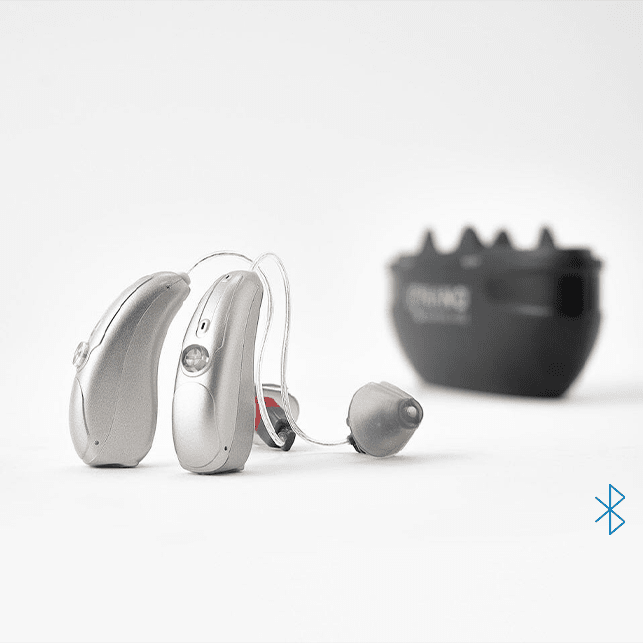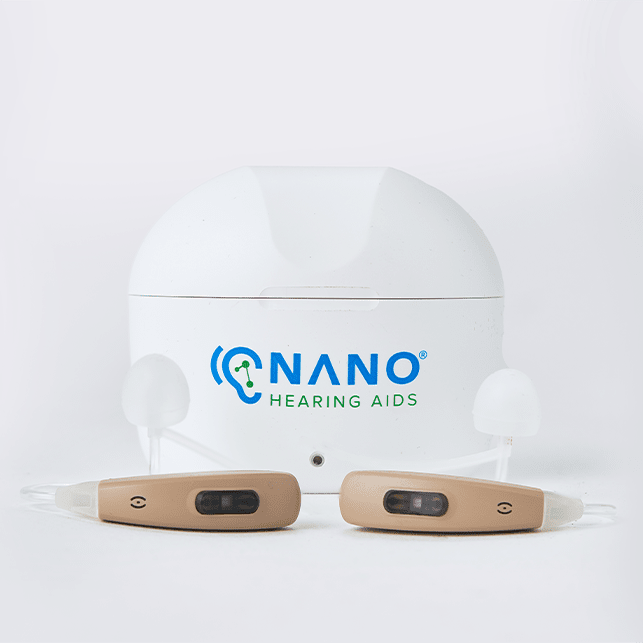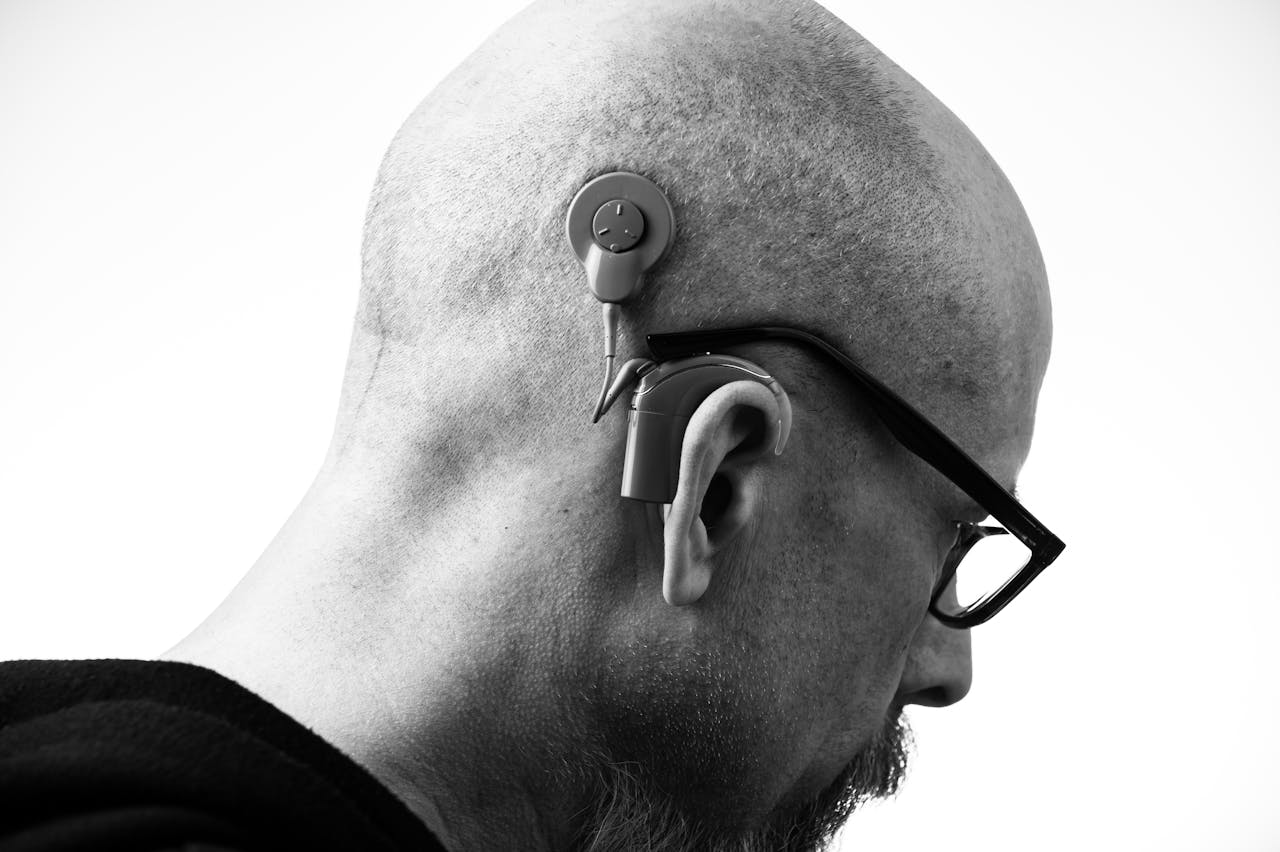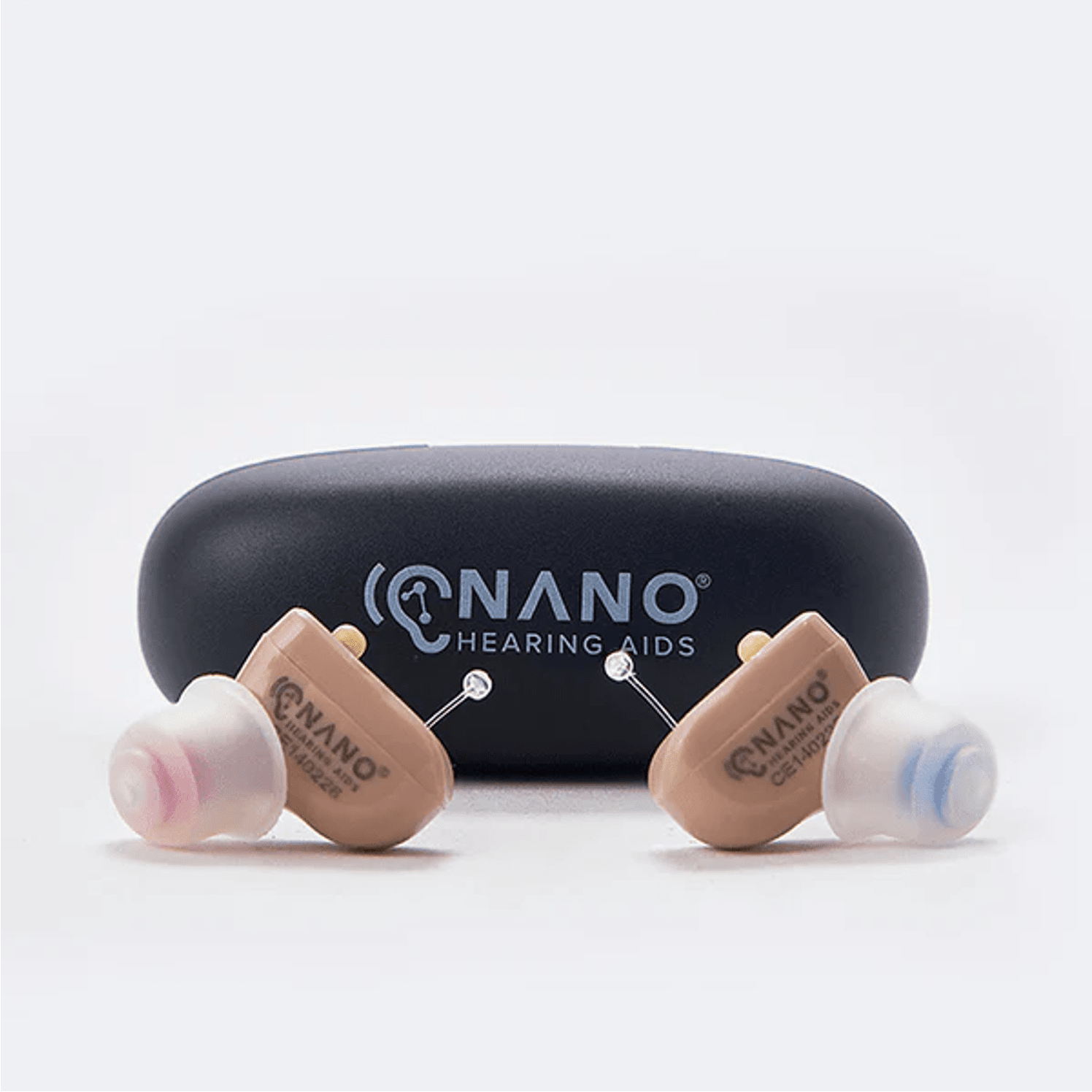Key Takeaways
- Cochlear implants require surgery and are ideal for severe hearing loss, while PSAPs are non-surgical and best for people with normal hearing that want sounds louder for activities like bird watching.
- Cochlear implants convert sound into electrical signals, whereas PSAPs amplify sound acoustically.
- PSAPs are more affordable and accessible, available over-the-counter, whereas cochlear implants are more expensive and require medical intervention.
- Customization and personalization are more advanced in cochlear implants due to the involvement of audiologists.
- Nano OTC Hearing Aids, including models like the First Ear Pro CIC and Audacity RIC, offer an accessible solution for perceived mild to moderate hearing loss with features like noise reduction and Bluetooth connectivity - without the need for surgery.
NANO Hearing Aids are FDA-registered, Class I devices. Our OTC hearing aids are designed for individuals over 18 years of age with perceived mild to moderate hearing impairment. With prices starting at just $297, they offer a viable solution for those looking to improve their hearing without breaking the bank.
What are Cochlear Implant and Personal Sound Amplification Products (PSAPs)
Definition of Cochlear Implant
A cochlear implant is an electronic device providing sound to individuals who are profoundly deaf or severely hard of hearing. It bypasses damaged ear parts and directly stimulates the auditory nerve. This device requires surgical implantation - and is recommended for severe hearing loss in one or both ears.
Definition of PSAPs
PSAPs are over-the-counter devices designed to amplify environmental sounds for non-hearing impaired consumers. They help people with normal hearing to hear better in specific situations. PSAPs are accessible and do not require a prescription or medical supervision.
How Cochlear Implants Work
Cochlear implants convert sound into electrical signals and send them directly to the auditory nerve. The device has an external portion behind the ear and a second portion surgically placed under the skin. The external part picks up sounds through a microphone, processes them into digital signals, and sends these signals to the internal part of the implant. This stimulates the auditory nerve fibers, allowing the brain to interpret them as sound.
How PSAPs Work
PSAPs amplify sounds. They consist of a microphone, an amplifier, and a speaker. The microphone picks up surrounding sounds, which are amplified and sent to the speaker - and this amplified sound is delivered directly into the ear canal.
PSAPs do not require surgical intervention and can be purchased and used without medical supervision.
Features of Cochlear Implants and PSAPs
The Anatomy of a Cochlear Implant
- Microphone: Captures sound from the environment.
- Speech Processor: Converts captured sounds into digital signals.
- Transmitter and Receiver/Stimulator: Receives signals from the speech processor and converts them into electrical impulses.
- Electrode Array: Sends electrical impulses to the auditory nerve.
The Anatomy of a PSAPs
- Microphone: Captures sound from the environment.
- Speech Processor: Converts captured sounds into digital signals.
- Transmitter and Receiver/Stimulator: Receives signals from the speech processor and converts them into electrical impulses.
- Electrode Array: Sends electrical impulses to the auditory nerve.
Customization and Personalization
Cochlear implants can be customized and personalized to the user's specific hearing needs. Audiologists fine-tune the device for optimal performance.
By contrast, PSAPs offer limited personalization options.
Sound Quality and Clarity
Cochlear implants generally offer superior sound quality and clarity, especially for severe hearing loss. The direct stimulation of the auditory nerve provides a clearer, more natural sound experience.
PSAPs, effective for amplifying all sounds in the environment, may not provide the same level of clarity, especially in noisy environments.
Battery Life and Maintenance
- Cochlear Implants: Use rechargeable batteries lasting 8 to 12 hours per charge. Regular maintenance includes charging batteries and cleaning external components. The internal component requires minimal maintenance but should be periodically checked by a healthcare professional.
- PSAPs: Often use disposable batteries lasting a few days to weeks, depending on usage. Some newer models offer rechargeable options. Maintenance involves regular battery replacement and cleaning.
Cost and Accessibility
- Cochlear Implants: Starting from $30,000 to $50,000 - including the device, surgery, and post-operative care. Many insurance plans cover them, but out-of-pocket expenses can be substantial.
- PSAPs: Starting from just $100 and up to more than $1,000 - available over-the-counter without a prescription, making them accessible to a broader audience.
A cochlear implant sound processor, an advanced medical device used to provide hearing to individuals with severe to profound sensorineural hearing loss by directly stimulating the auditory nerve. (Image Credit: Chic Bee)
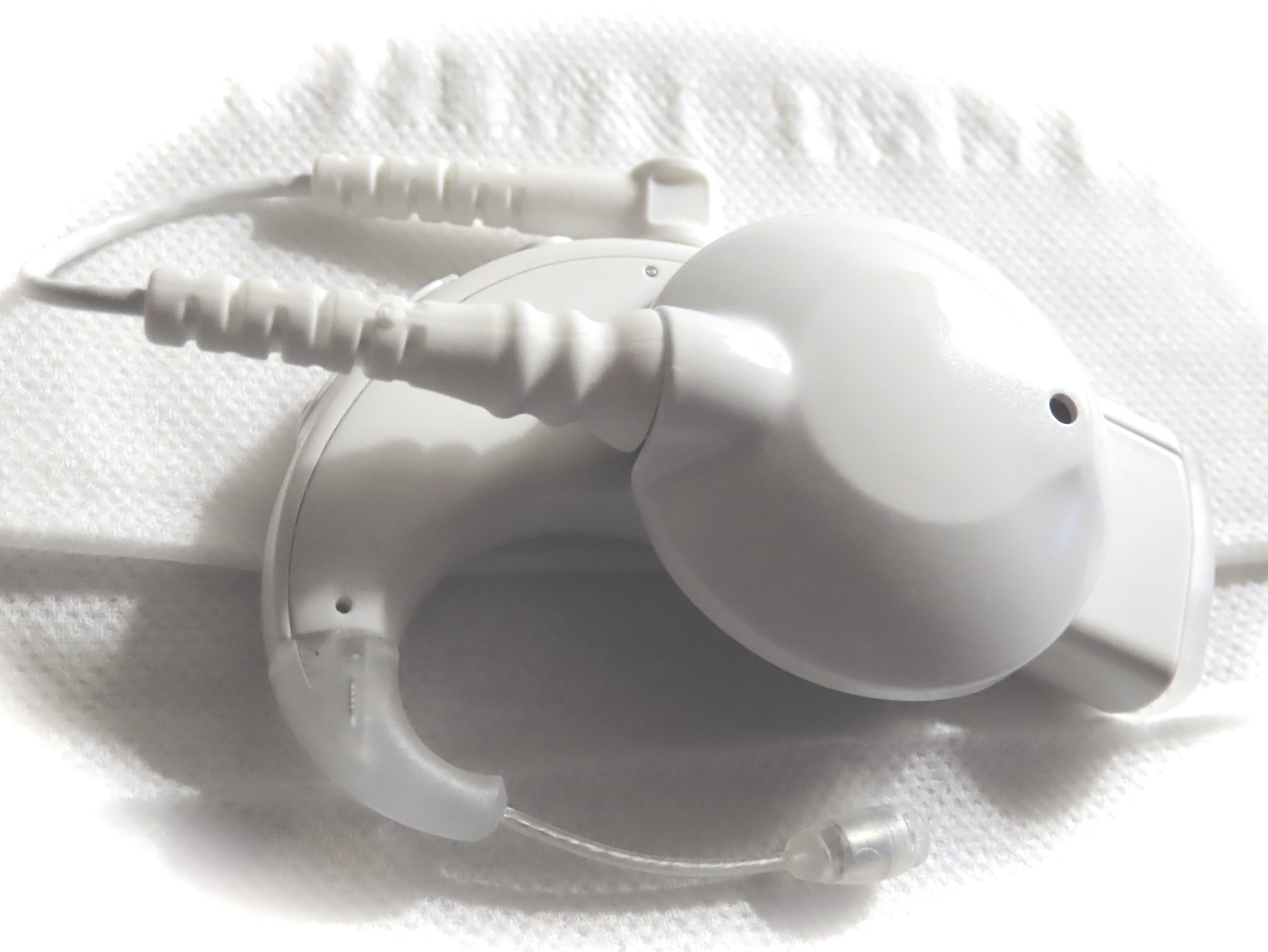
Pros and Cons of Cochlear Implant and PSAPs
Pros and Cons of Cochlear Implants

Pros and Cons of PSAPs
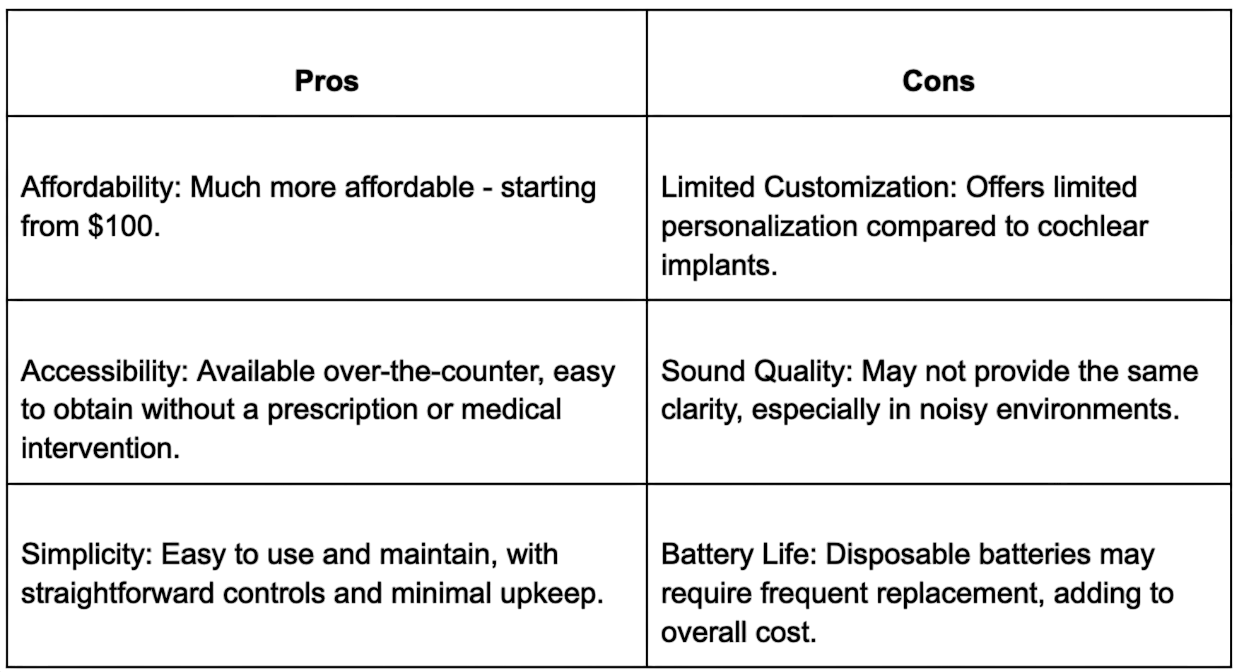
Why Choose Nano Hearing Aids
First Ear Pro CIC: Compact, nearly invisible hearing aids with customizable ear-tips and advanced noise management.
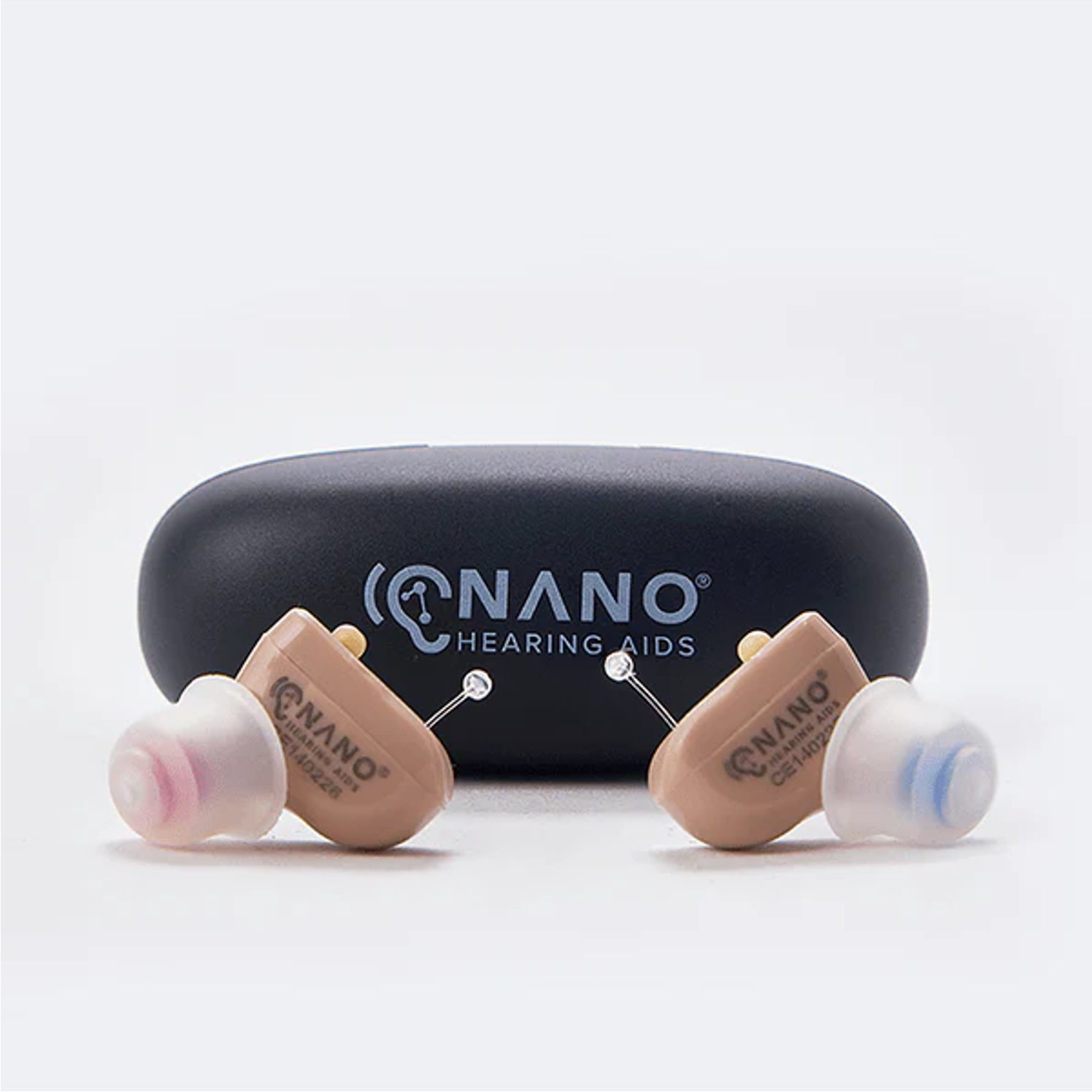
At Nano Hearing Aids, with over seven years of experience, we offer a unique combination of benefits compared to cochlear implants and PSAPs.
Our FDA-registered, Class I medical devices are designed for perceived mild to moderate hearing loss, providing a reliable, safe solution.
Unlike cochlear implants requiring surgery, our hearing aids are available over the counter - making them accessible without a prescription or medical supervision.
Models like the First Ear Pro CIC and Audacity RIC highlight our commitment to advanced technology and user convenience.
The First Ear Pro CIC features push-button control, rechargeable batteries lasting up to 18 hours, and powerful feedback cancellation. The Audacity RIC offers Bluetooth connectivity, a portable charging case, and comprehensive control via the Nano Audacity App.
Nano Hearing Aids are more cost-effective than cochlear implants and provide superior sound quality and customization compared to PSAPs.
This balance of quality and affordability makes our devices a compelling choice for those seeking to improve their hearing without incurring high costs. As Class I medical devices, they ensure safe, effective use with minimal risk.
Frequently Asked Questions
Can anyone get a cochlear implant?
Cochlear implants are recommended for individuals with severe to profound hearing loss who do not benefit from traditional hearing aids.
Candidates undergo a thorough evaluation by an audiologist and an otolaryngologist to determine if a cochlear implant is the best option for their specific needs.
What is the recovery time after cochlear implant surgery?
Most individuals return home the same or the next day. Initial healing takes about 2 to 4 weeks - keep the surgical site clean and dry. Activation occurs 3 to 6 weeks post-surgery, followed by several months of auditory rehabilitation.
Are PSAPs suitable for severe hearing loss?
No, PSAPs are not suitable for severe hearing loss. They are designed to amplify environmental sounds for perceived mild to moderate hearing difficulties - not to replace hearing aids for significant hearing impairment.
For severe hearing loss, a cochlear implant or a more advanced hearing aid is more appropriate.
How do I maintain my cochlear implant or PSAPs?
Cochlear Implants
- Keep external components clean and dry.
- Regularly charge or replace the batteries.
- Schedule periodic check-ups with your audiologist to ensure the device functions correctly.
PSAPs
- Clean the device regularly to remove earwax and debris.
- Replace disposable batteries as needed or recharge if using a rechargeable model.
- Store the device in a dry, safe place when not in use.
What Should I Consider When Choosing Nano Hearing Aids Over Cochlear Implants or PSAPs?
Nano Hearing Aids offers a non-surgical, affordable solution for perceived mild to moderate hearing loss.
While cochlear implants are designed for severe hearing loss and require surgery, Nano provides advanced customization and high-quality sound without medical intervention. Unlike PSAPs, which are less personalized, Nano Hearing Aids are accessible over the counter and deliver a reliable, convenient hearing experience.
Our models, such as the First Ear Pro CIC and Audacity RIC, offer features like wireless technology, feedback cancellation, and rechargeable batteries - ensuring high performance and user satisfaction. This makes Nano a practical, cost-effective choice for those looking to improve their hearing.

